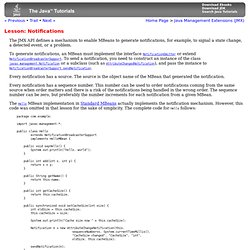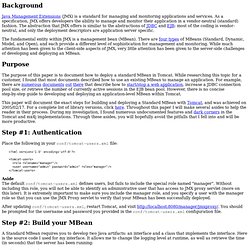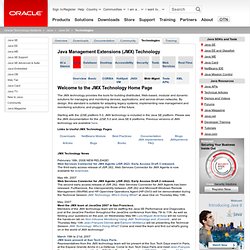

Lesson: Notifications (The Java™ Tutorials > Java Management Extensions (JMX)) The JMX API defines a mechanism to enable MBeans to generate notifications, for example, to signal a state change, a detected event, or a problem.

To generate notifications, an MBean must implement the interface NotificationEmitter or extend NotificationBroadcasterSupport. To send a notification, you need to construct an instance of the class javax.management.Notification or a subclass (such as AttributeChangedNotification), and pass the instance to NotificationBroadcasterSupport.sendNotification. Every notification has a source. The source is the object name of the MBean that generated the notification. Jolokia. MBeans and Tomcat: A HOWTO Guide for Managing YOUR Application. Background Java Management Extensions (JMX) is a standard for managing and monitoring applications and services.

As a specification, JMX offers developers the ability to manage and monitor their application in a vendor-neutral (standard) fashion. The abstraction that JMX offers is similar to the abstractions of JDBC and EJB: most of the coding is vendor-neutral, and only the deployment descriptors are application server specific. The fundamental entity within JMX is a management bean (MBean).
Java Management Extensions (JMX) The JMX technology provides the tools for building distributed, Web-based, modular and dynamic solutions for managing and monitoring devices, applications, and service-driven networks.

By design, this standard is suitable for adapting legacy systems, implementing new management and monitoring solutions, and plugging into those of the future. Starting with the J2SE platform 5.0, JMX technology is included in the Java SE platform. Please see the JMX documentation for the J2SE 5.0 and Java SE 6 platforms.